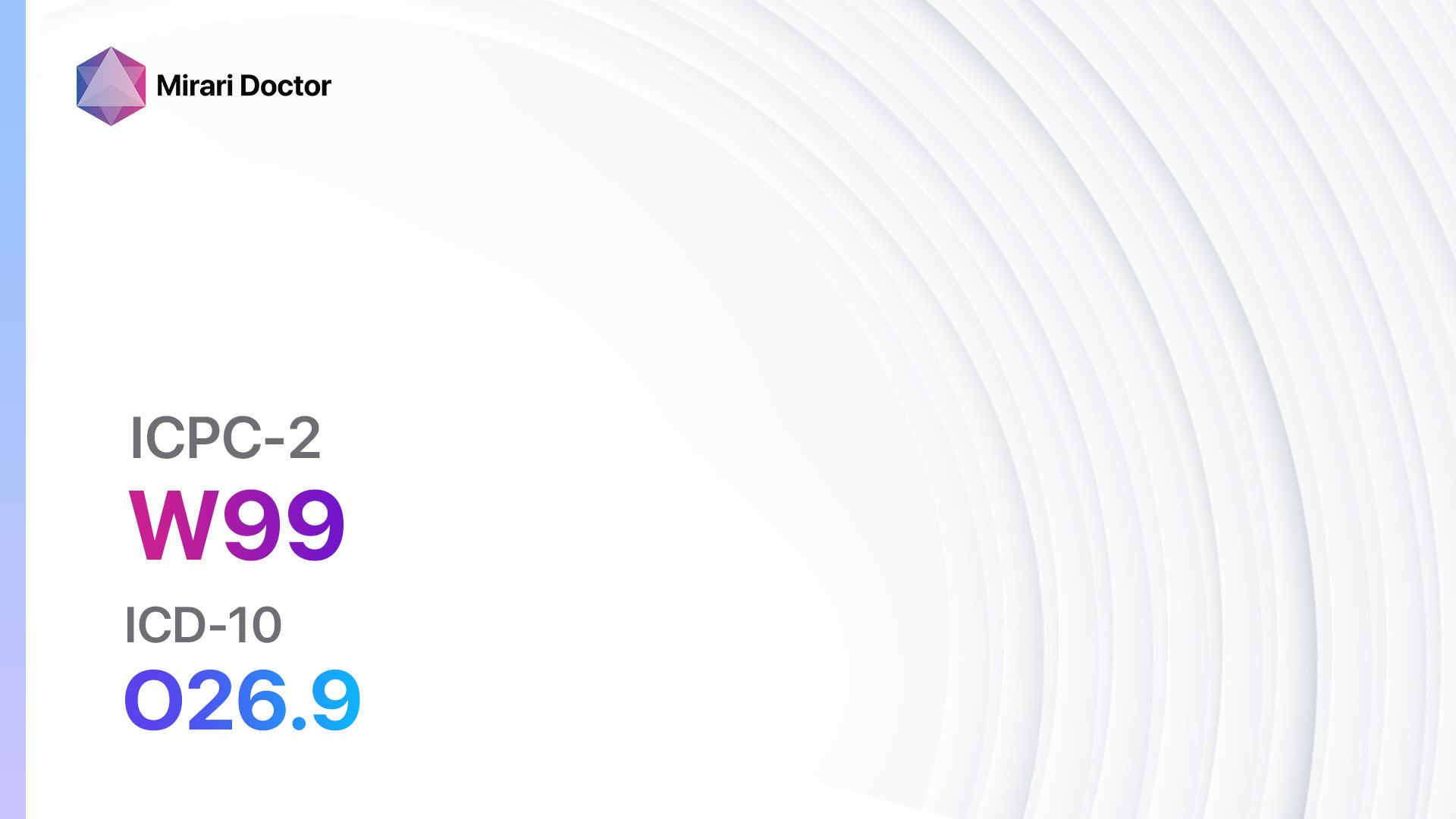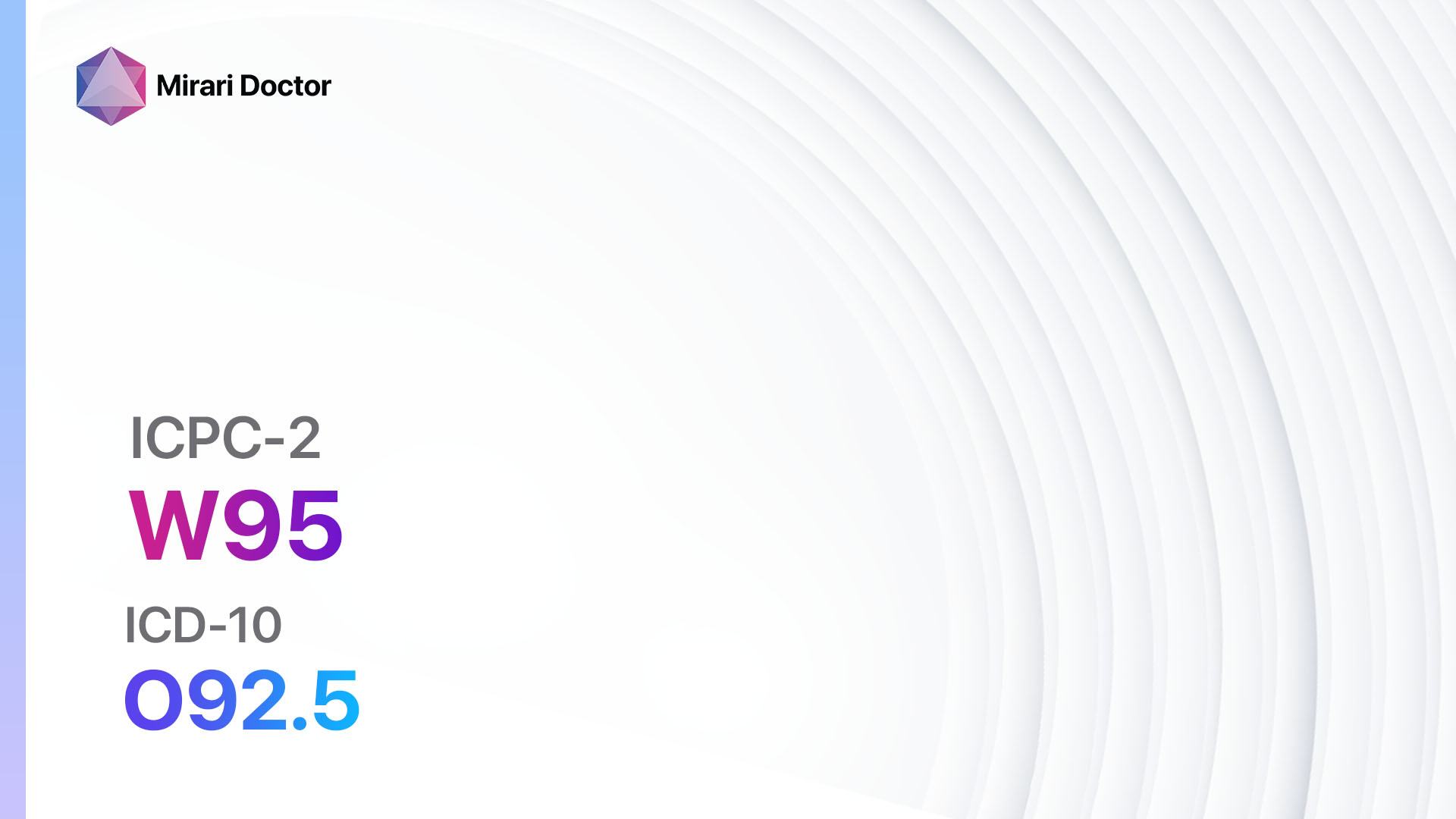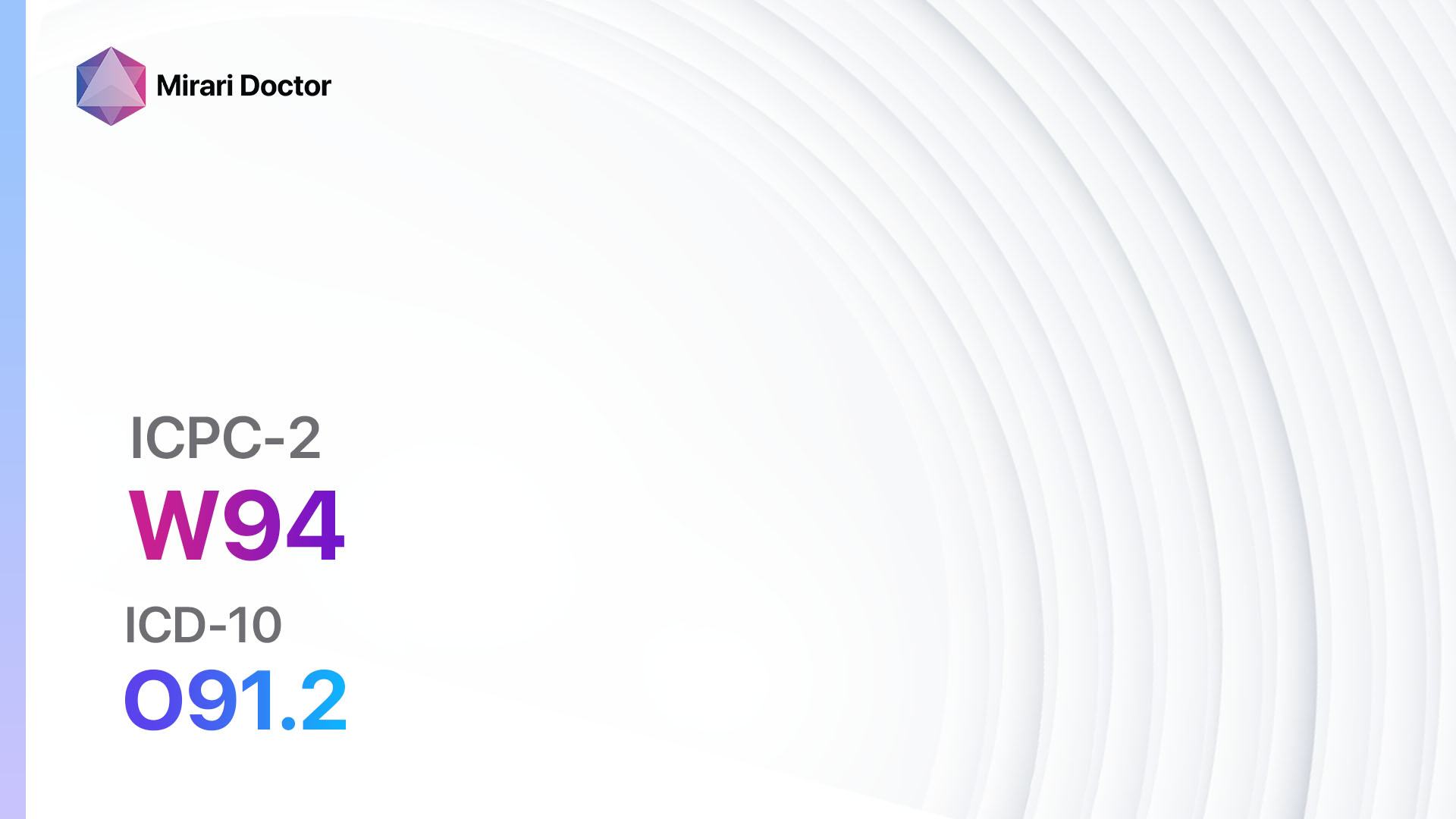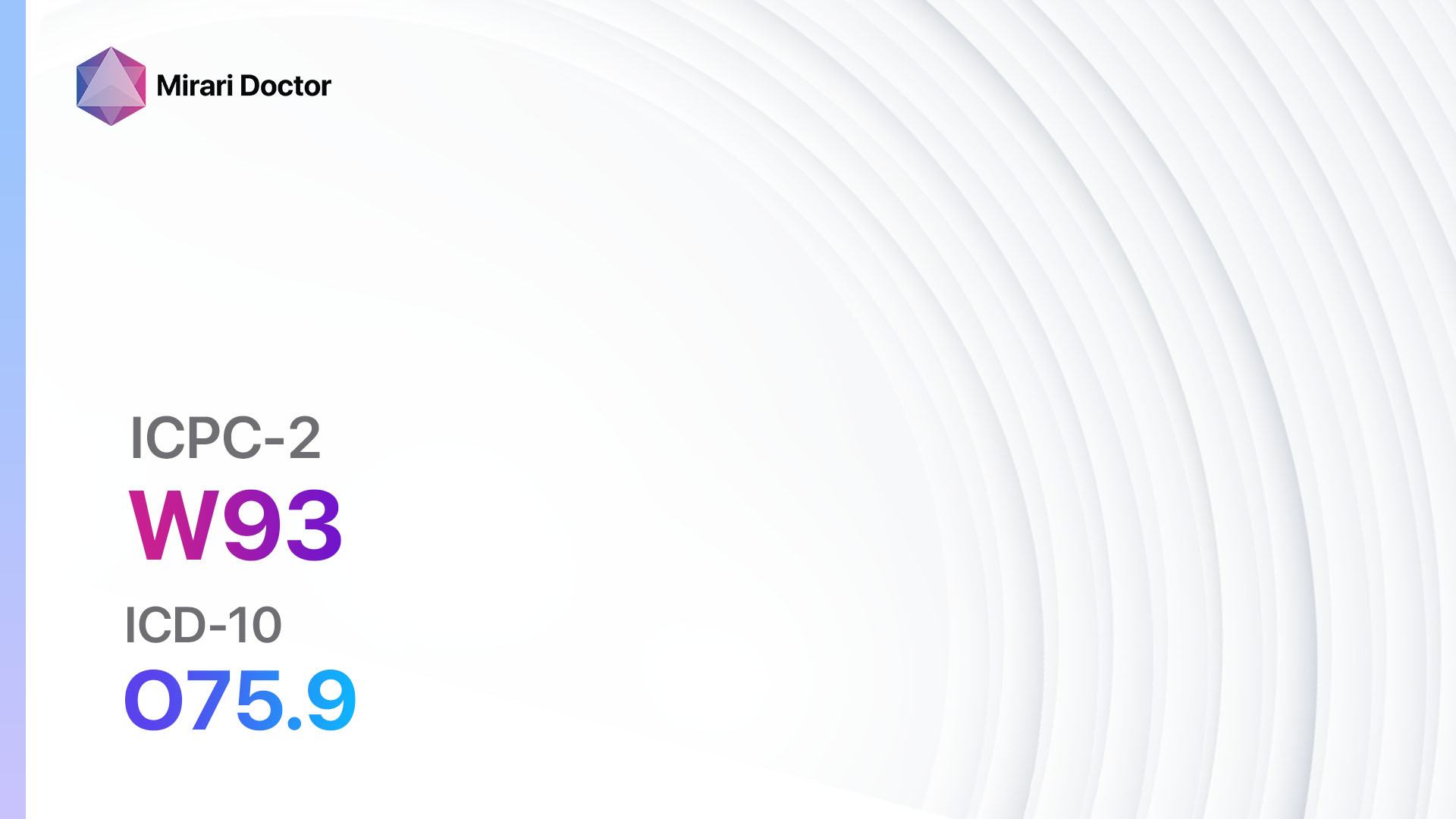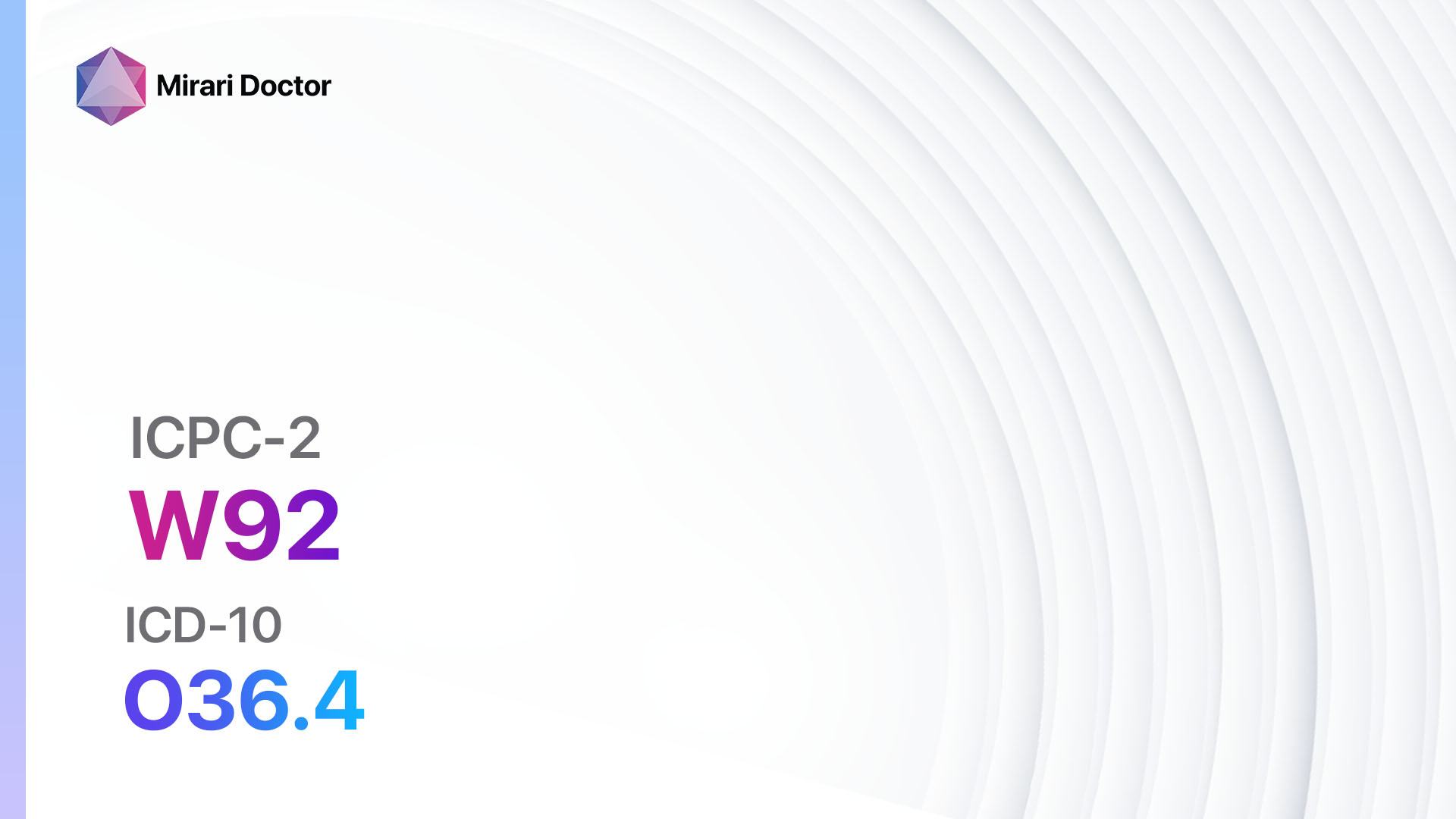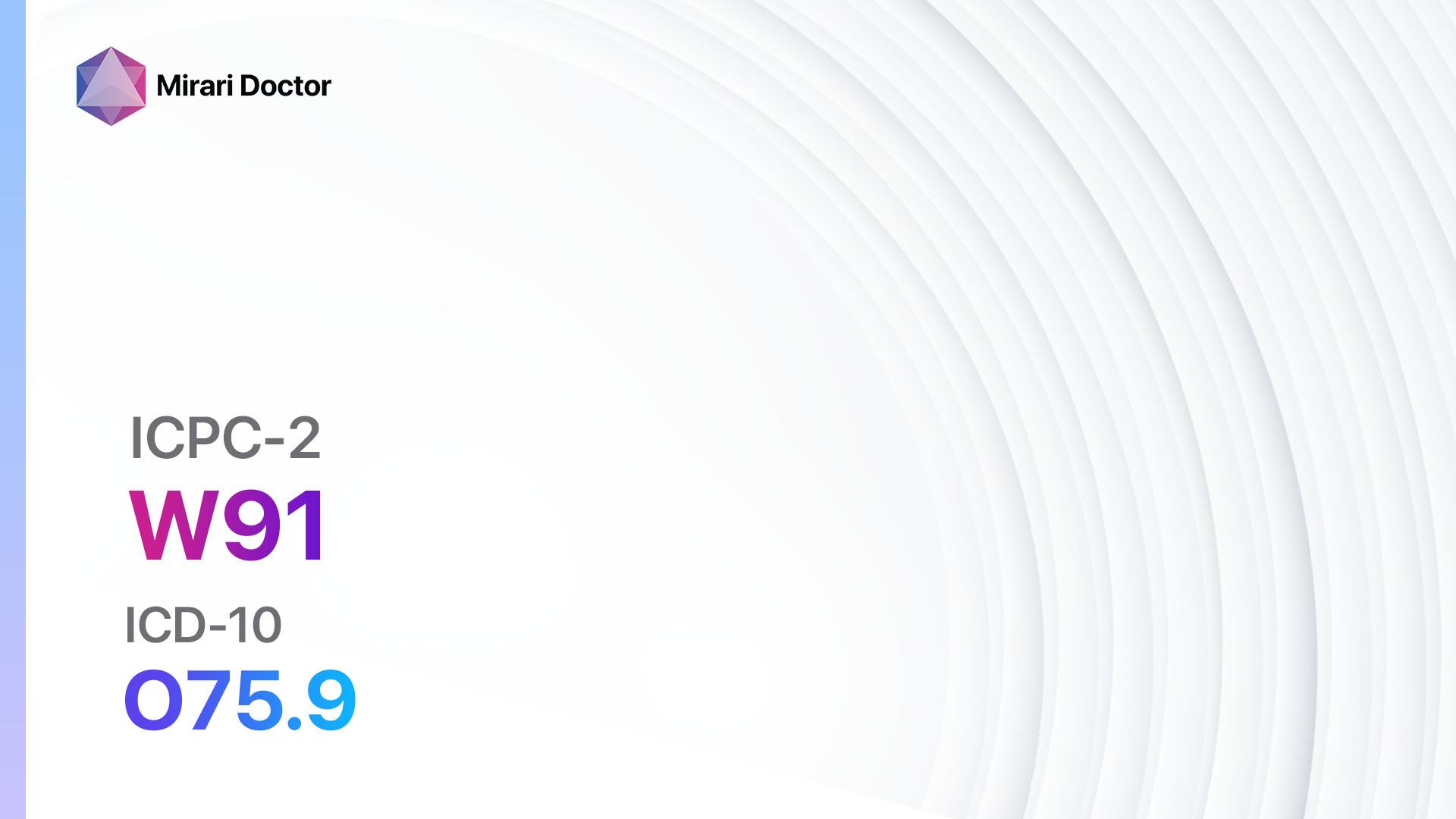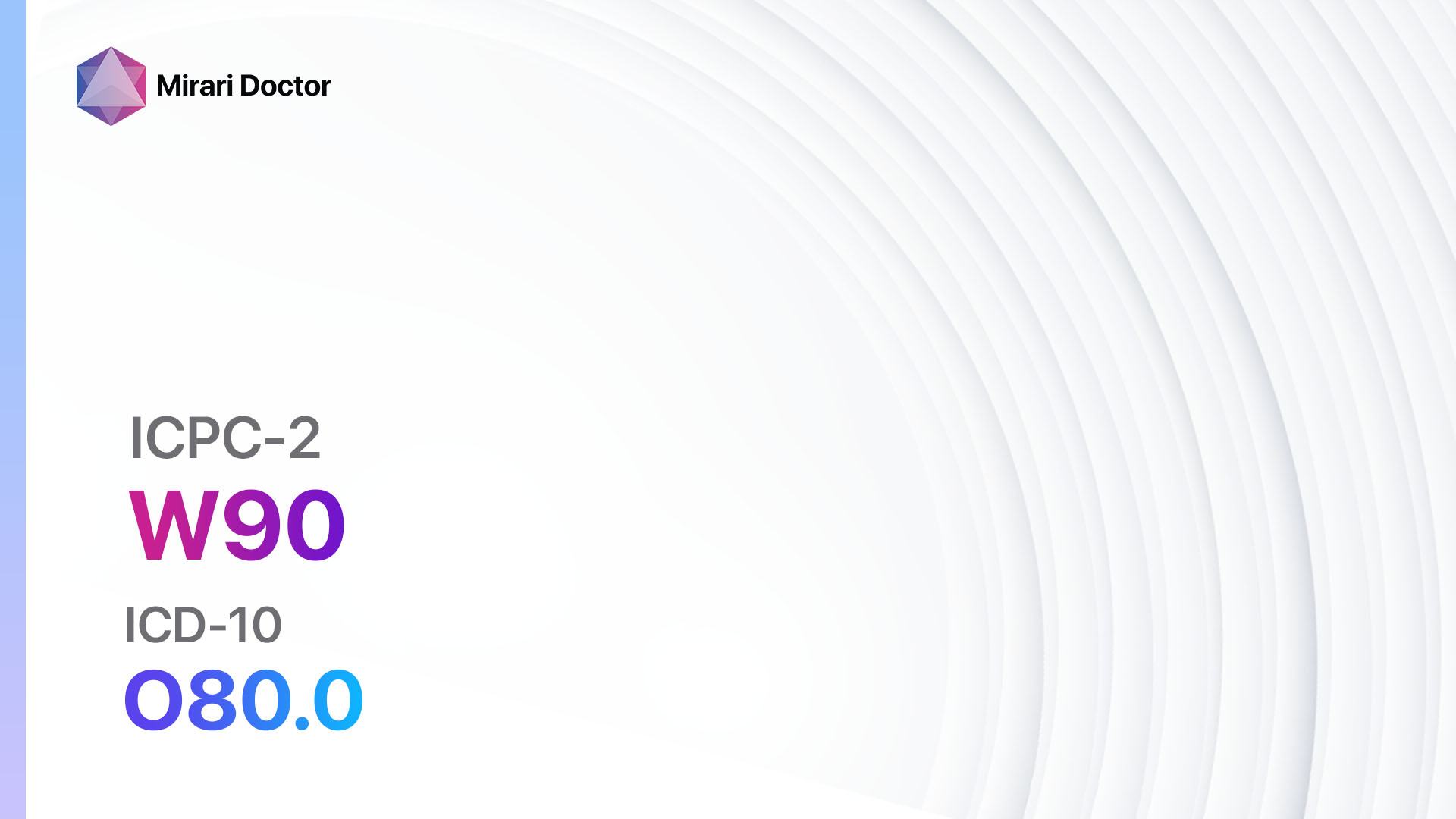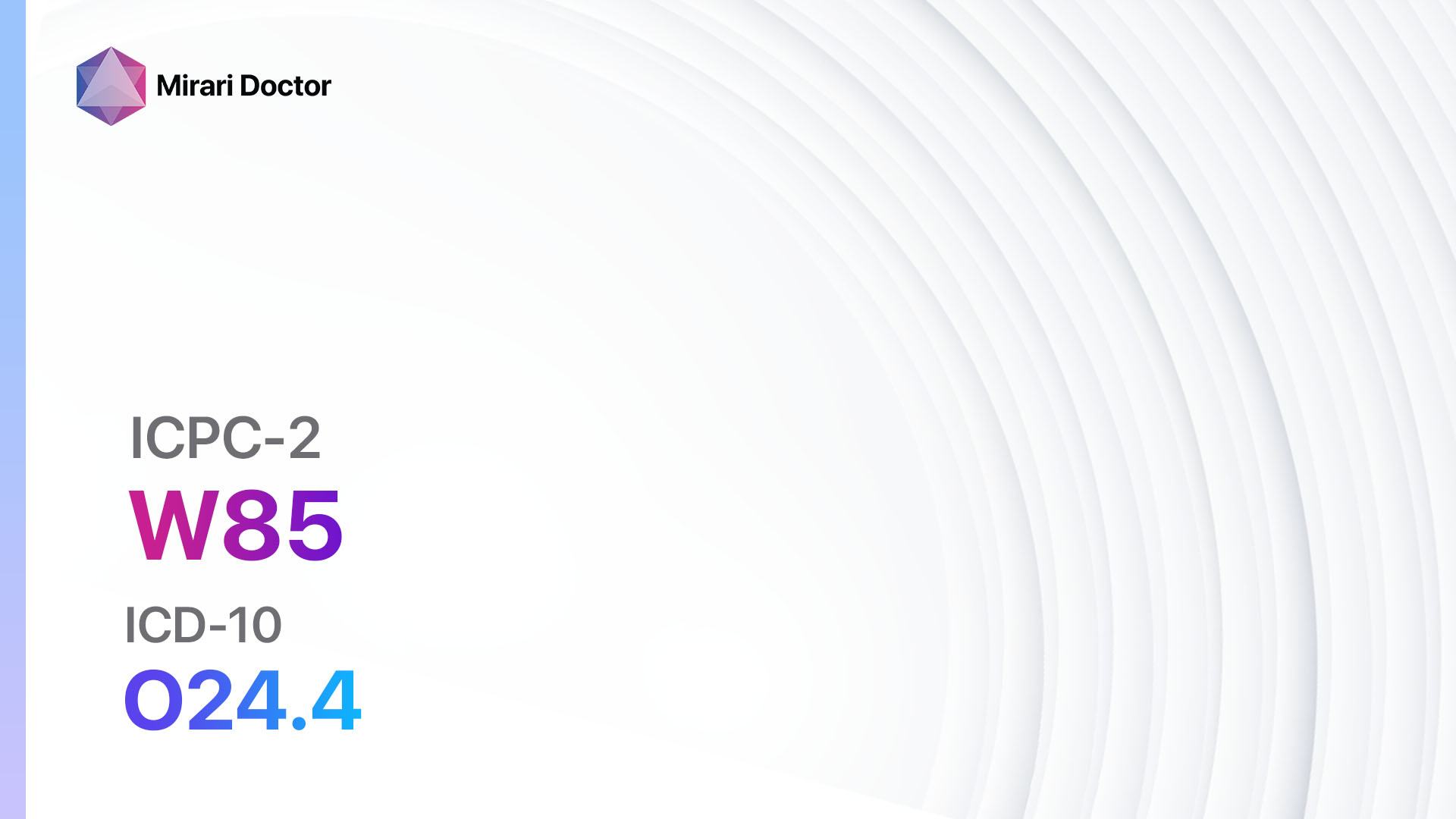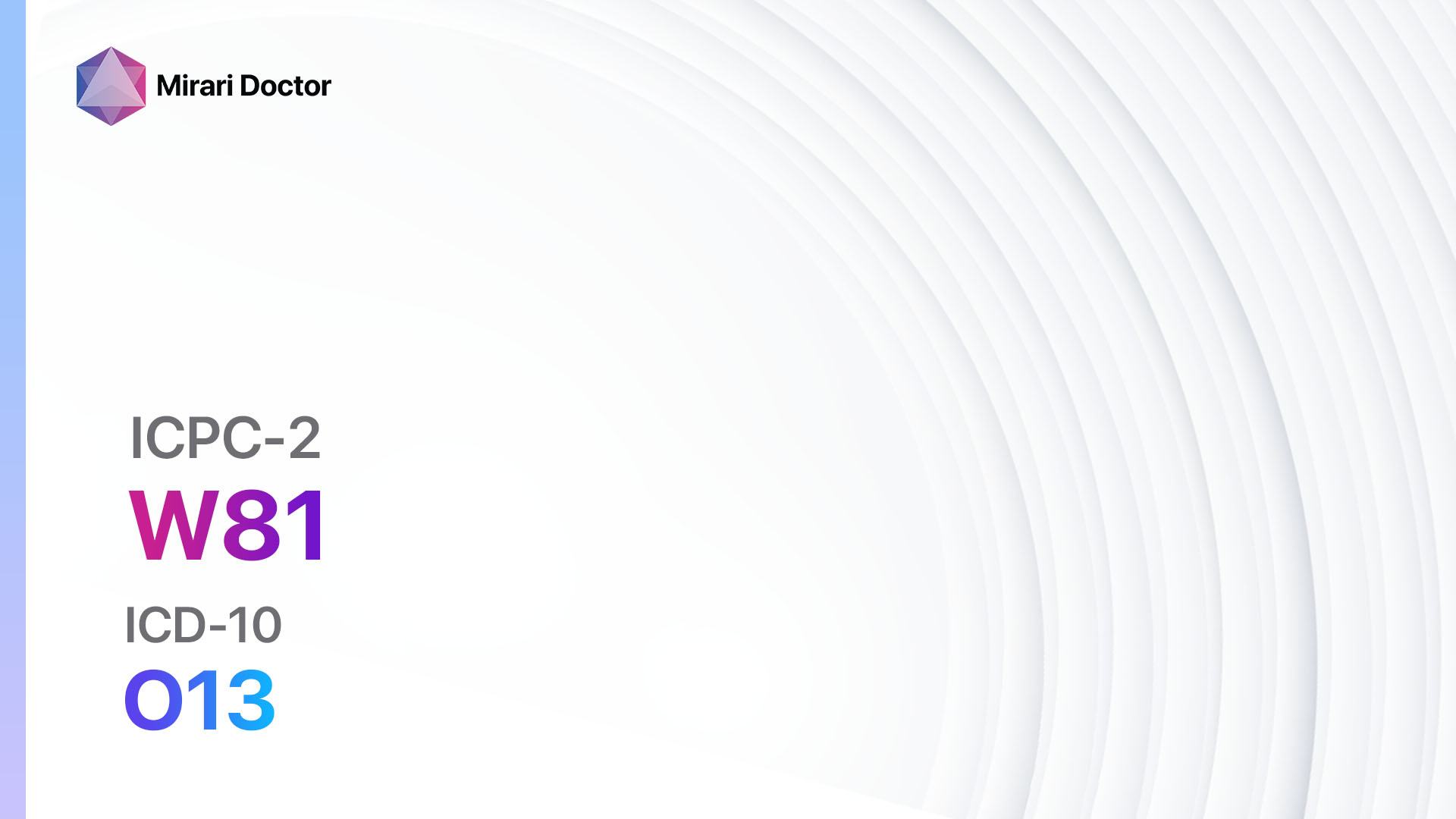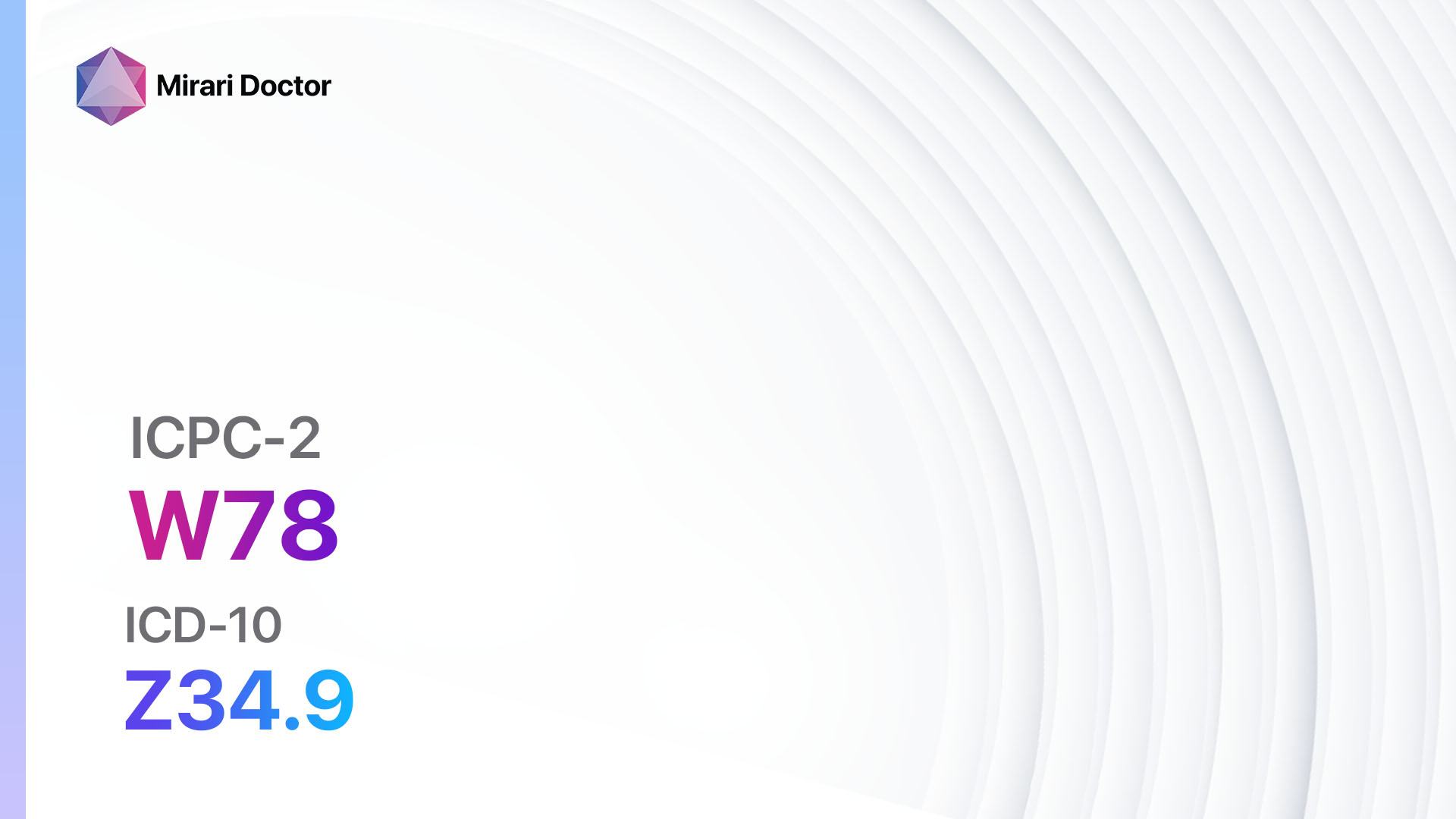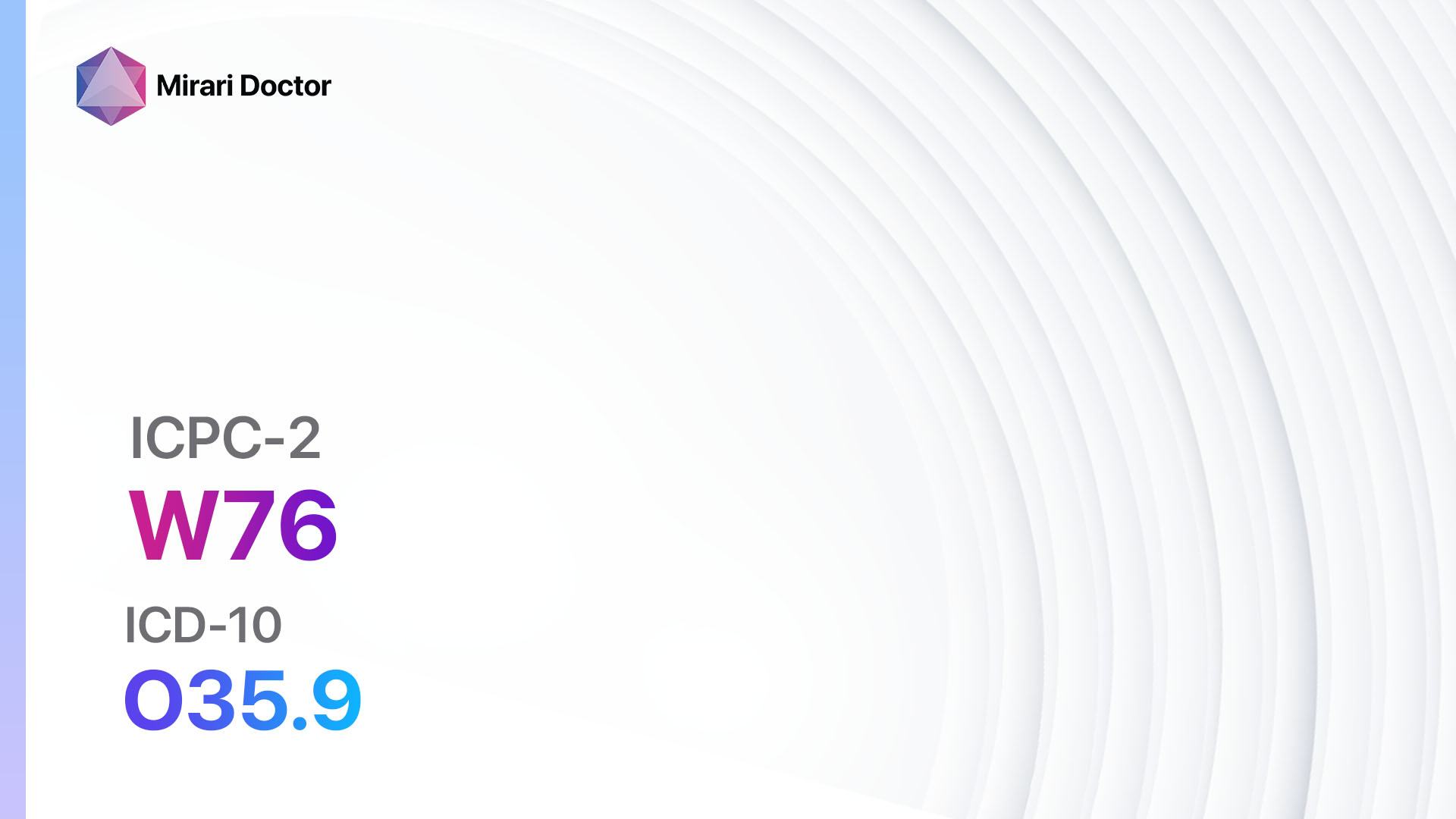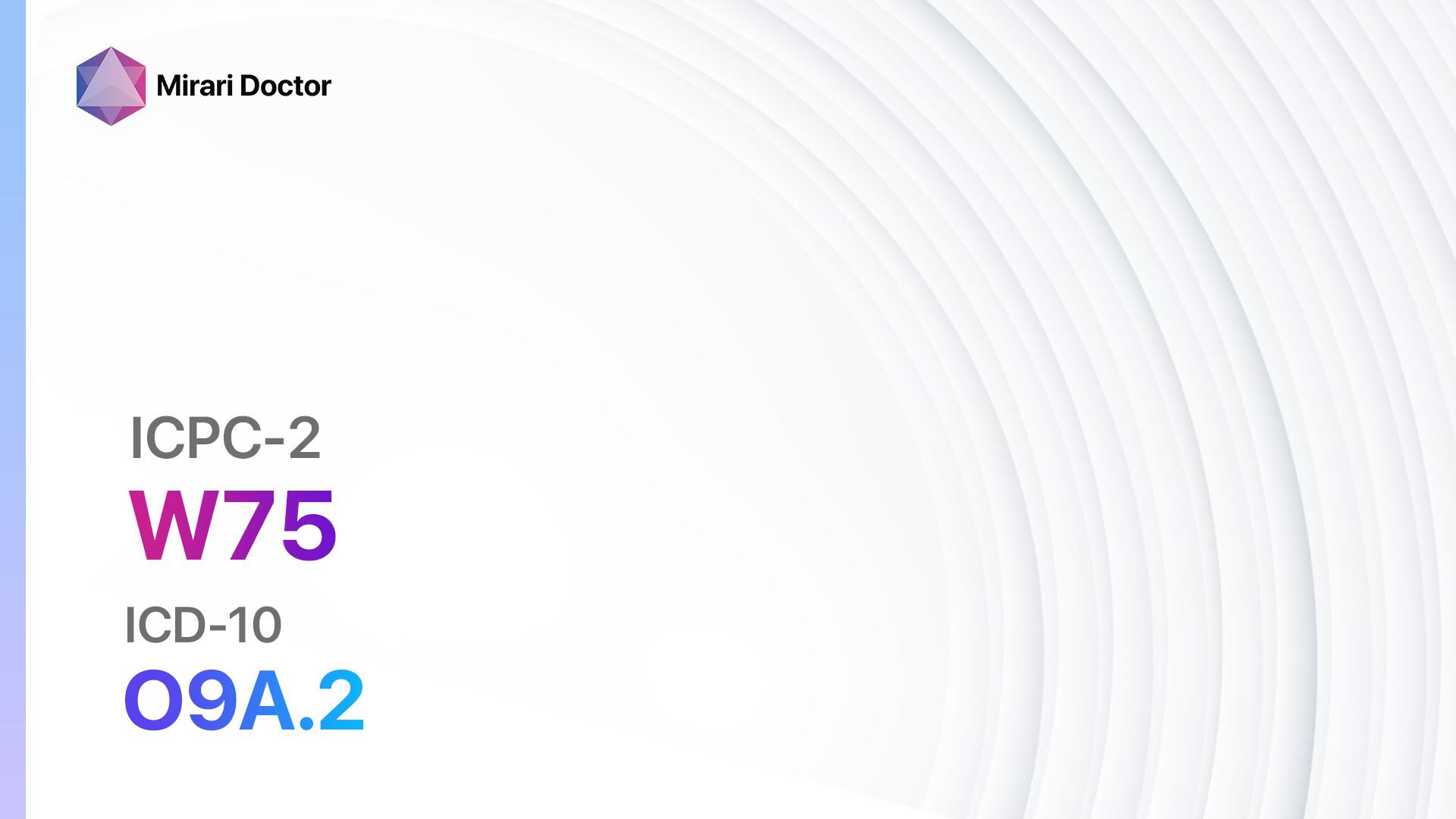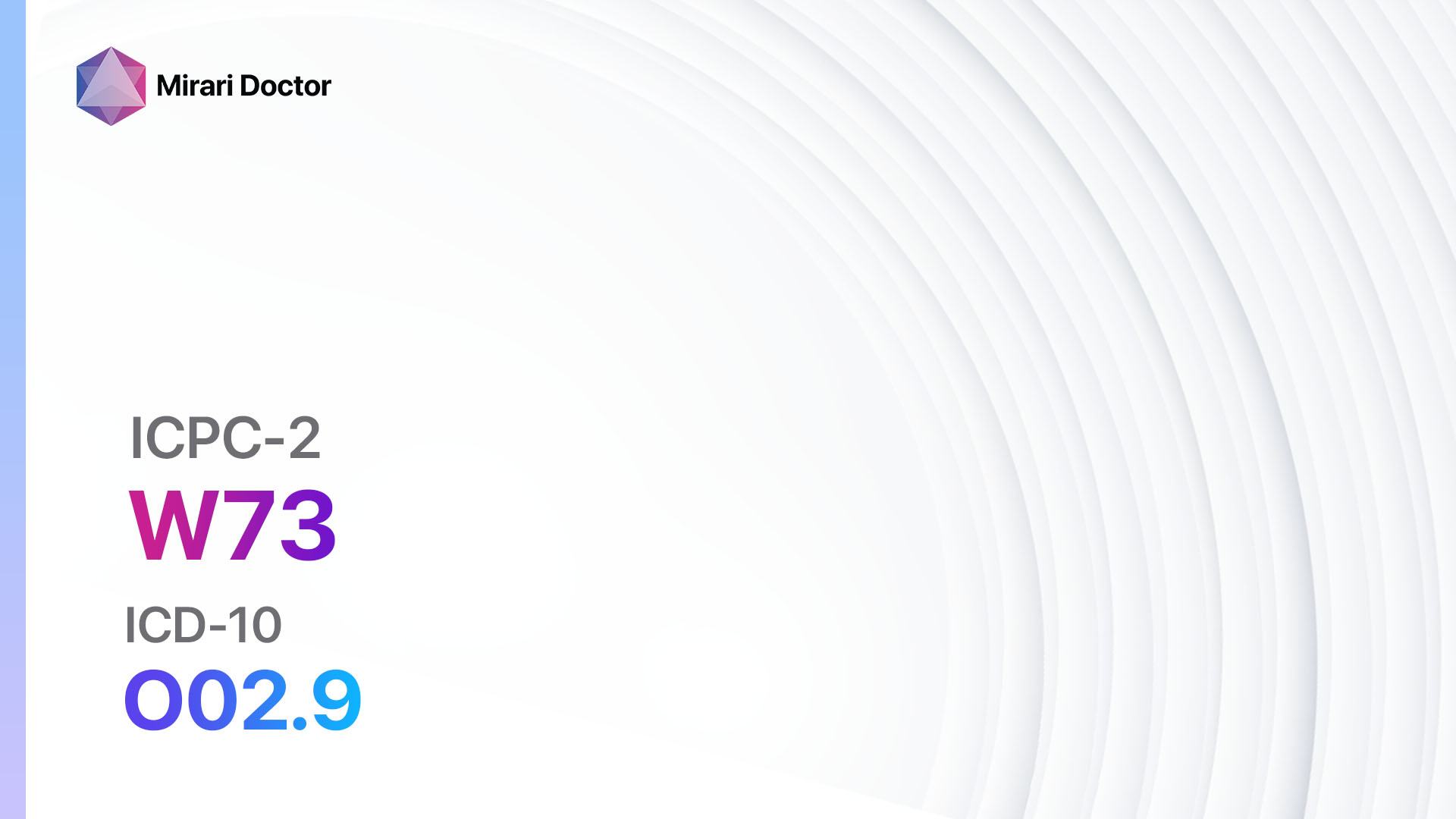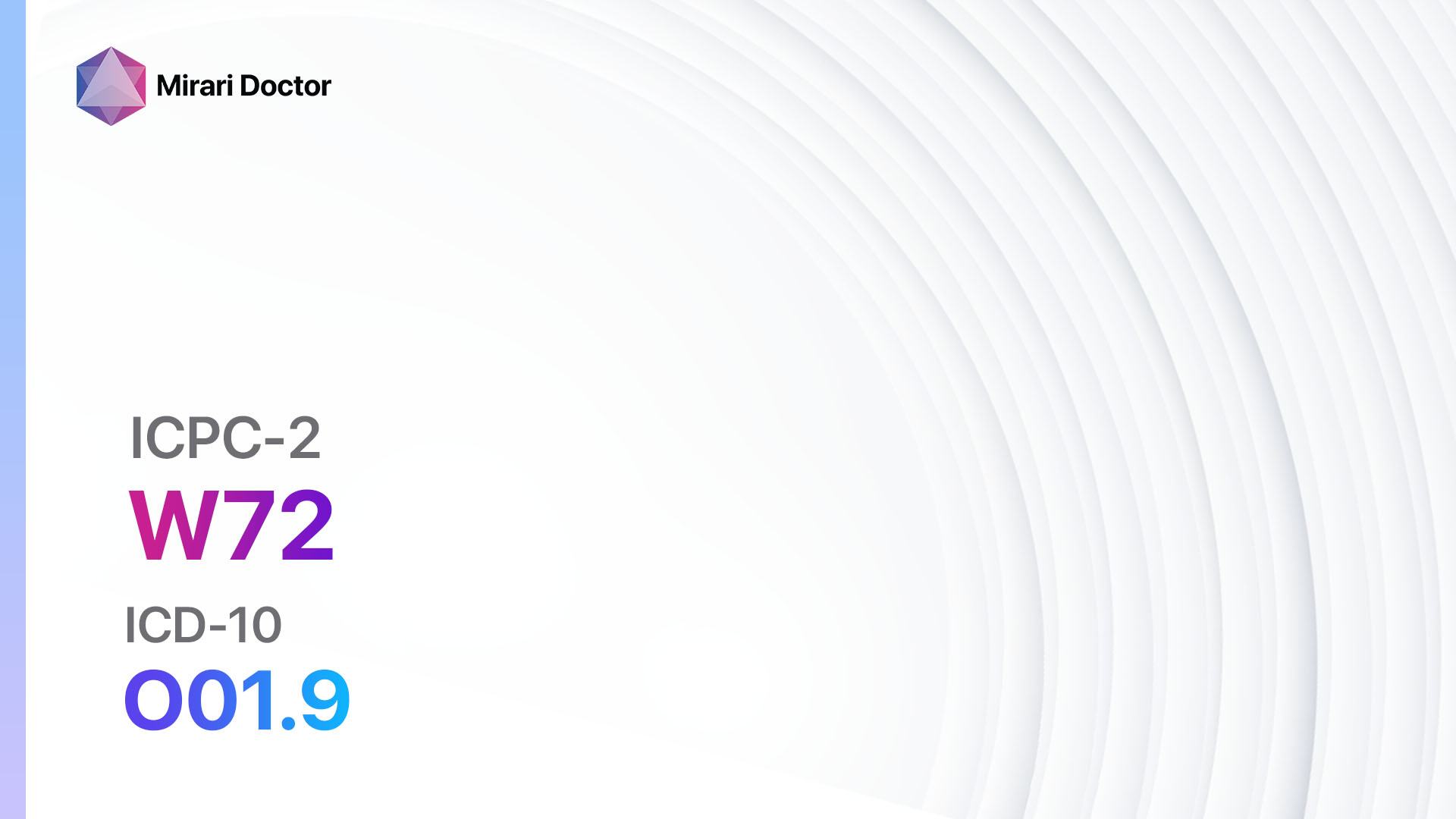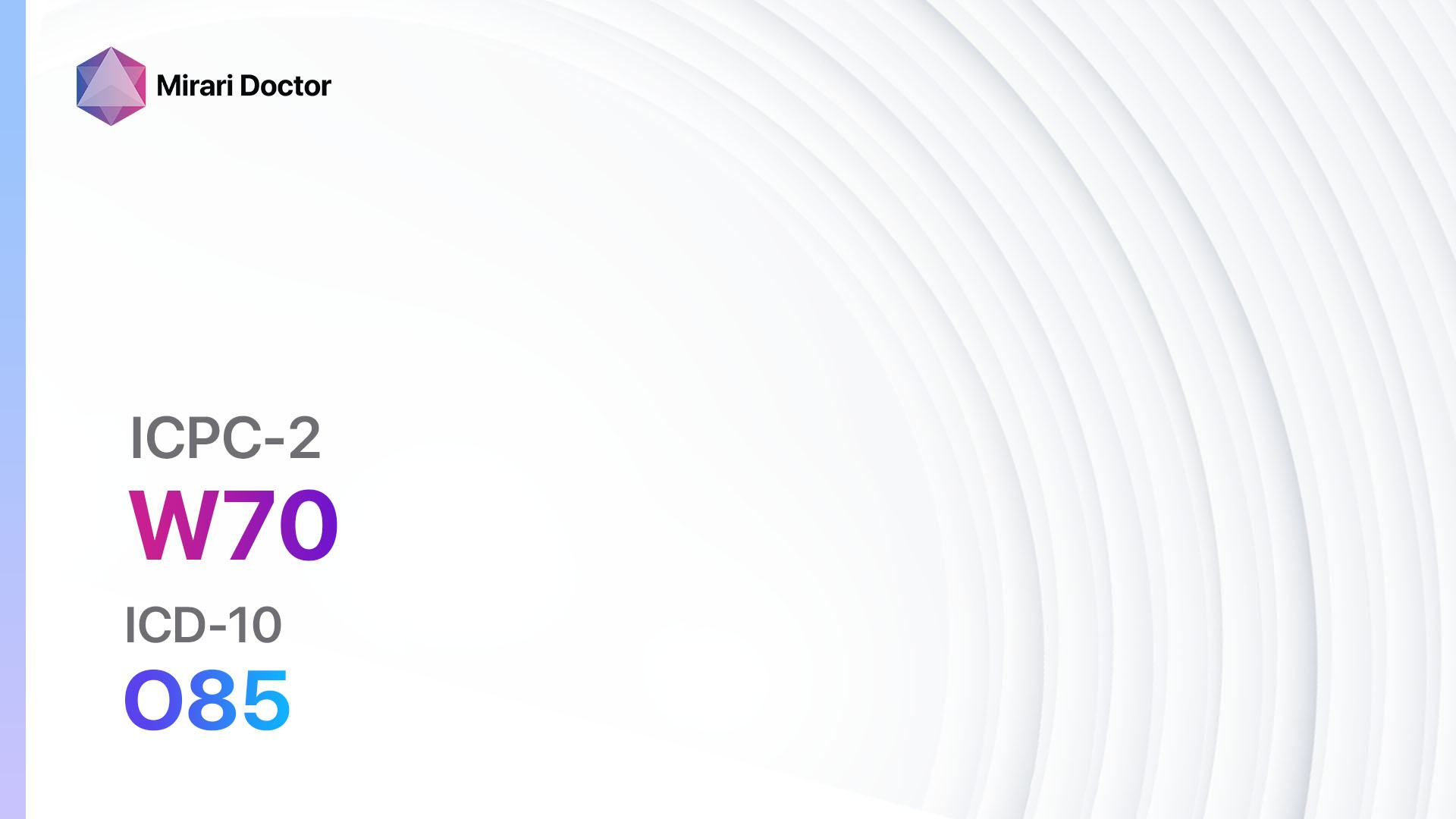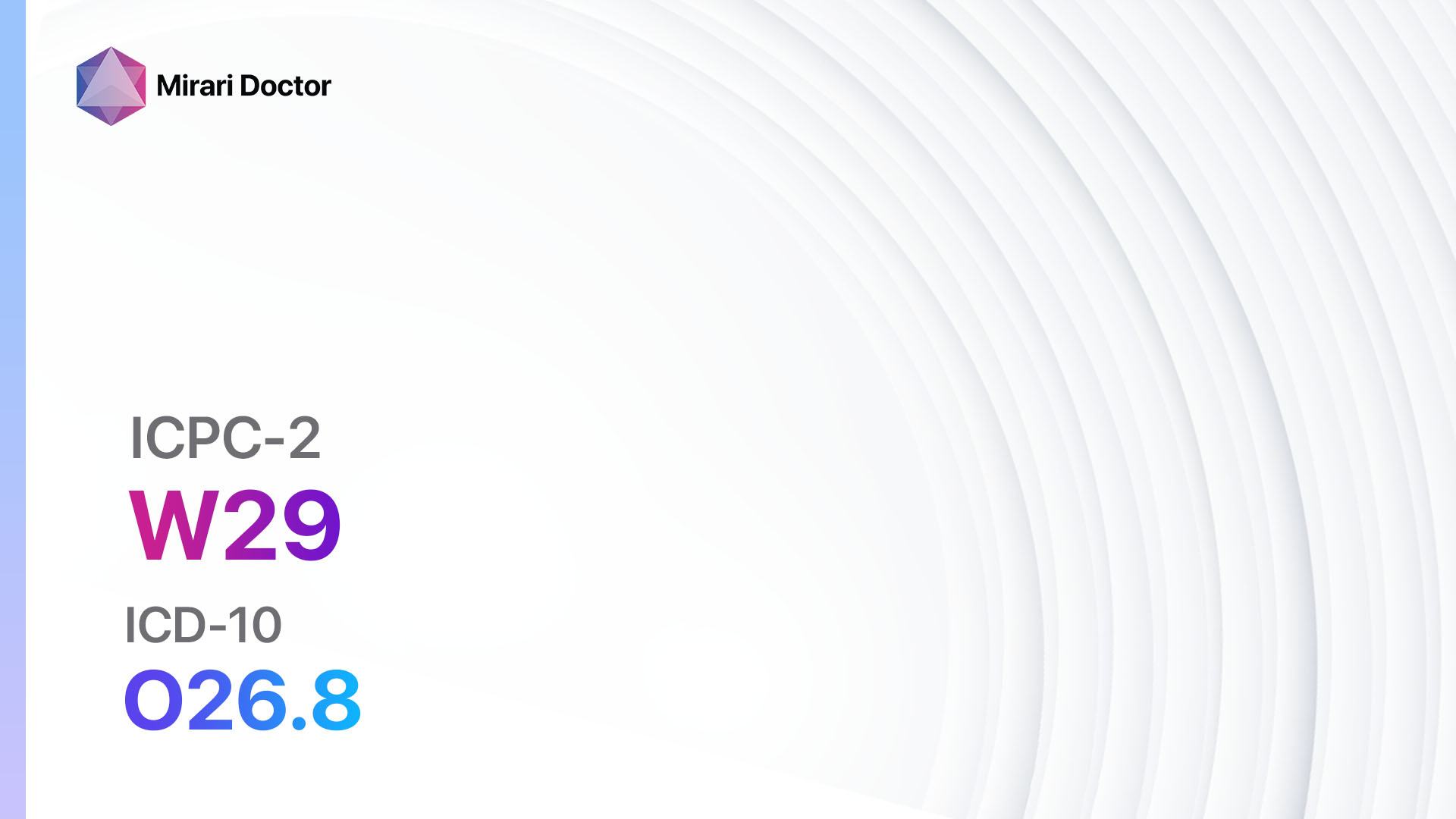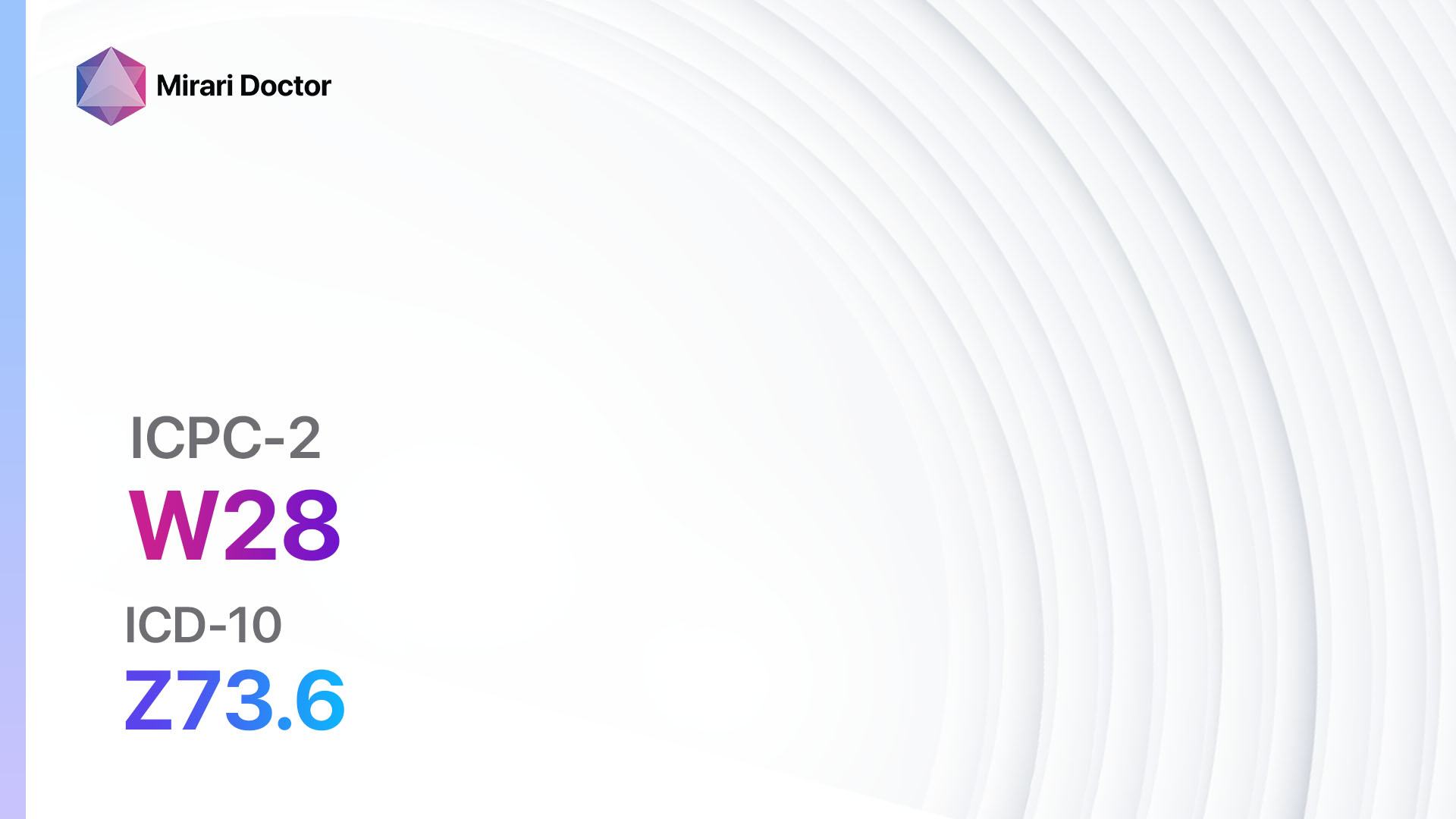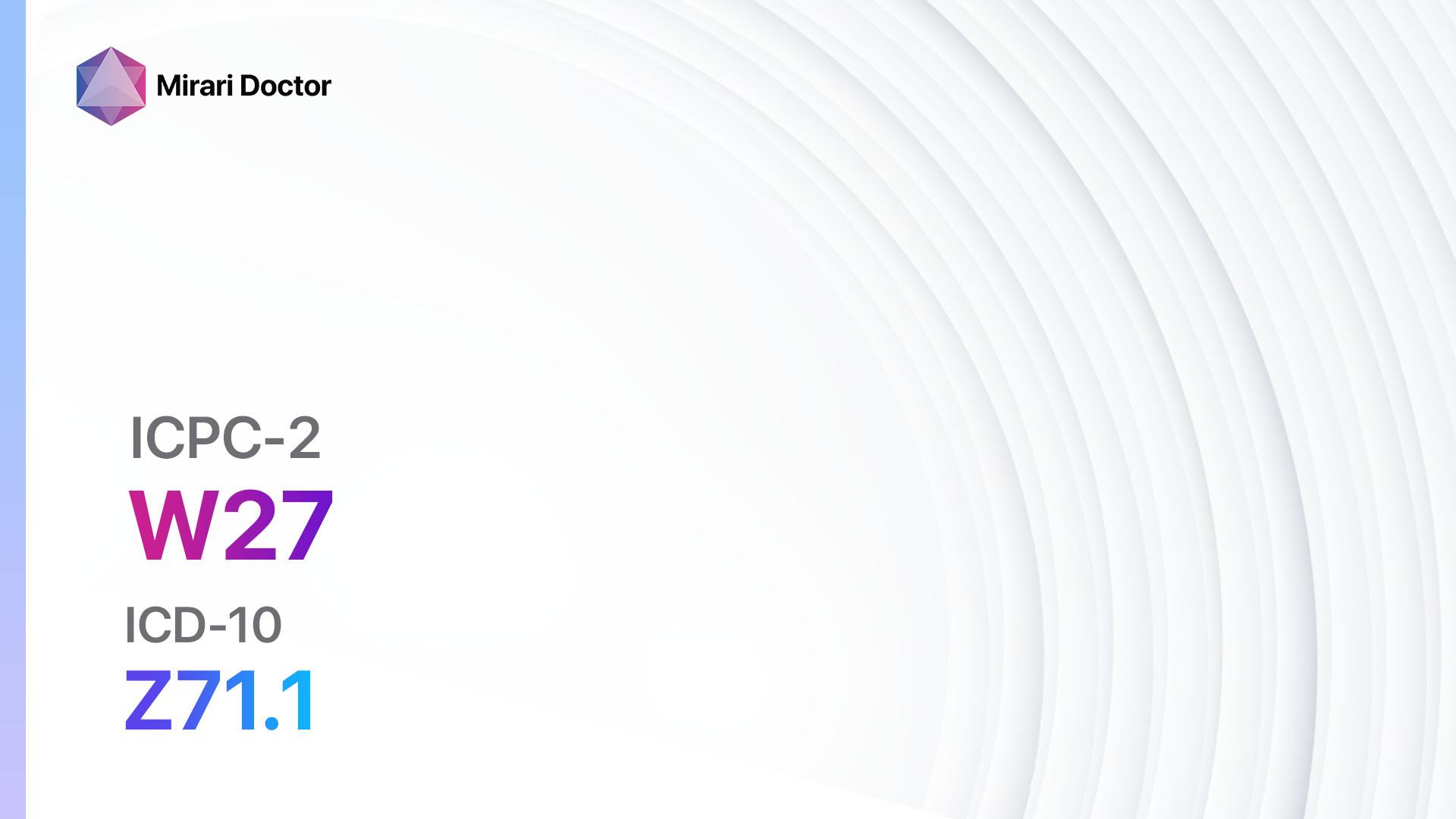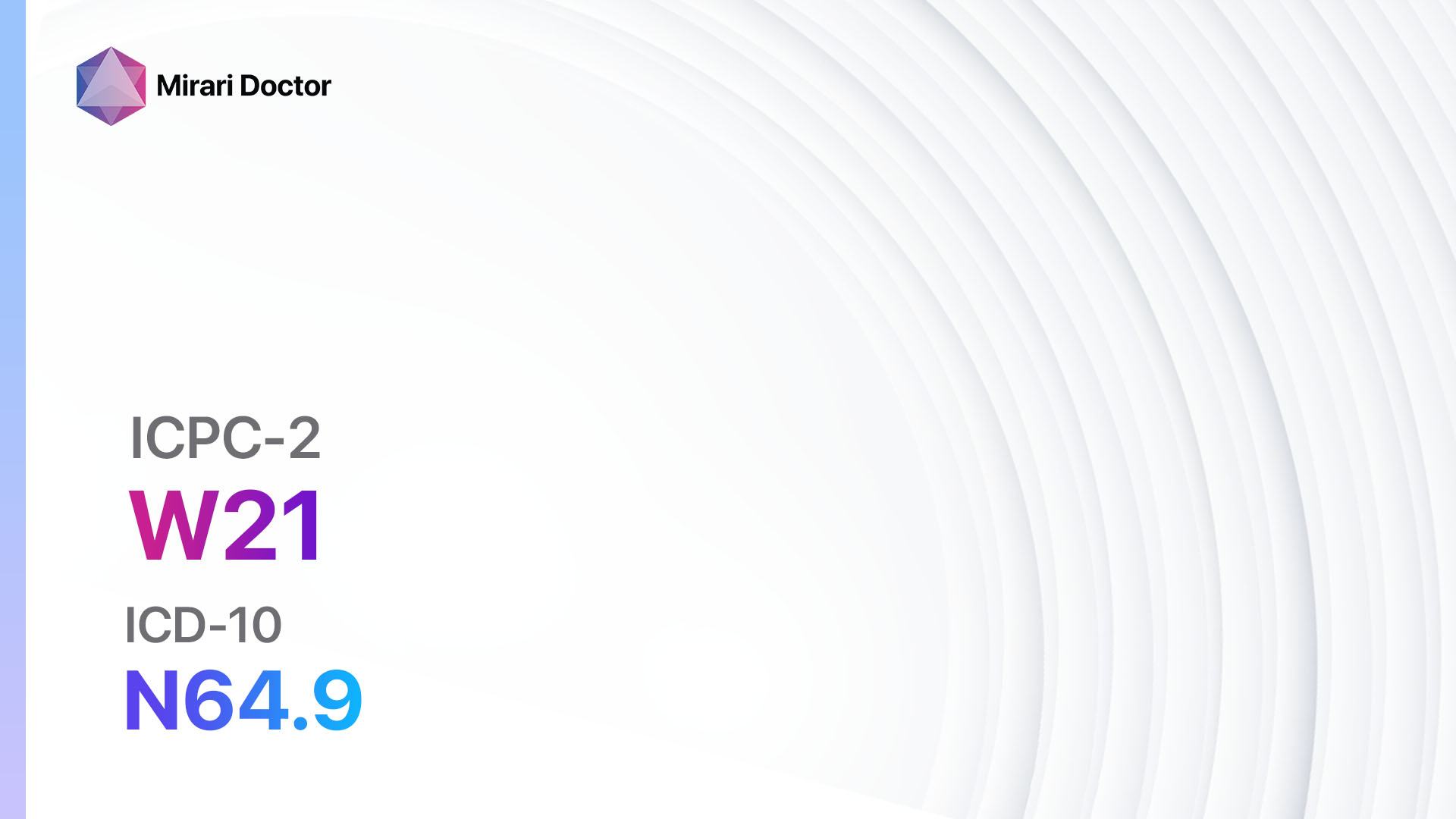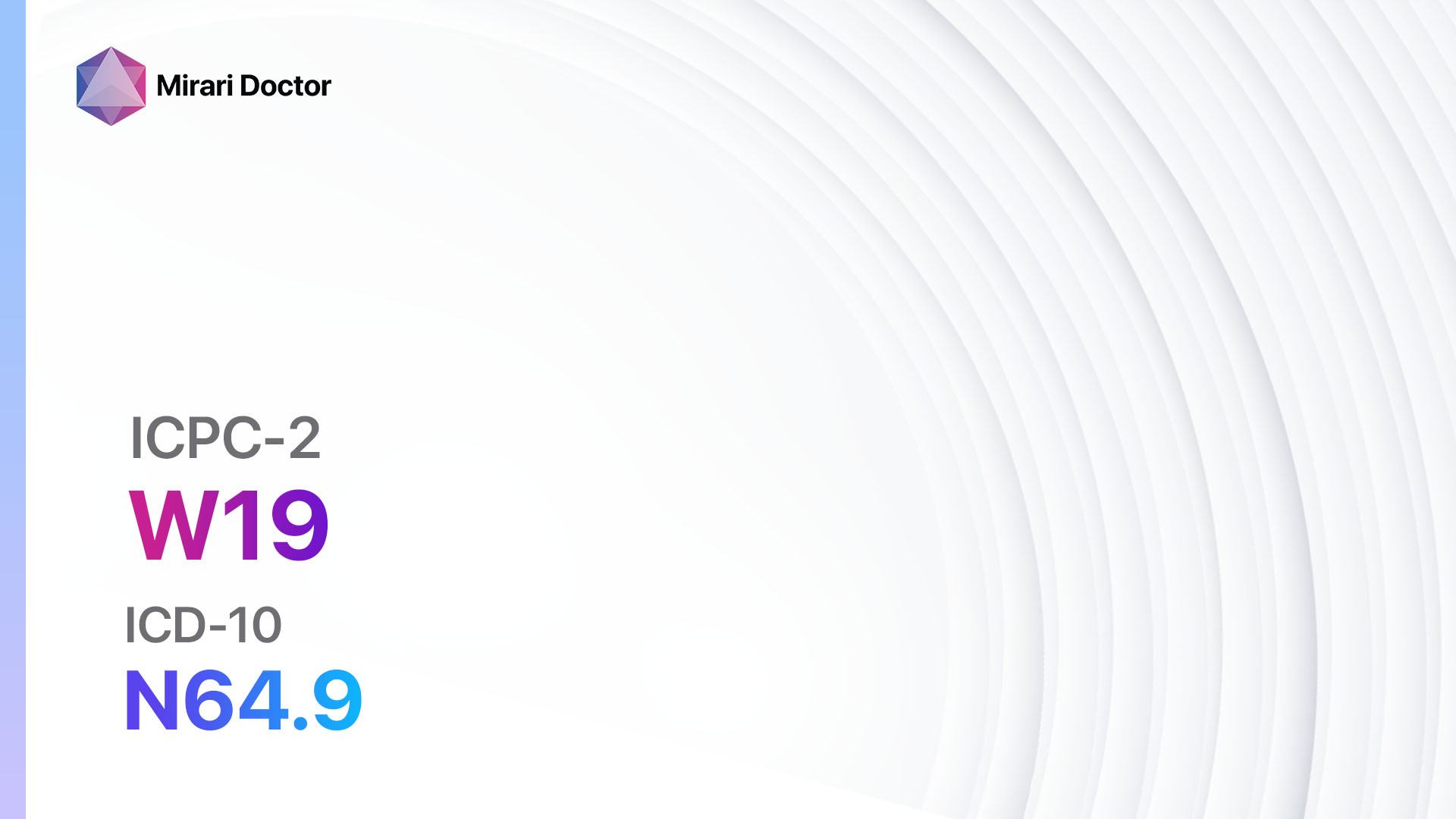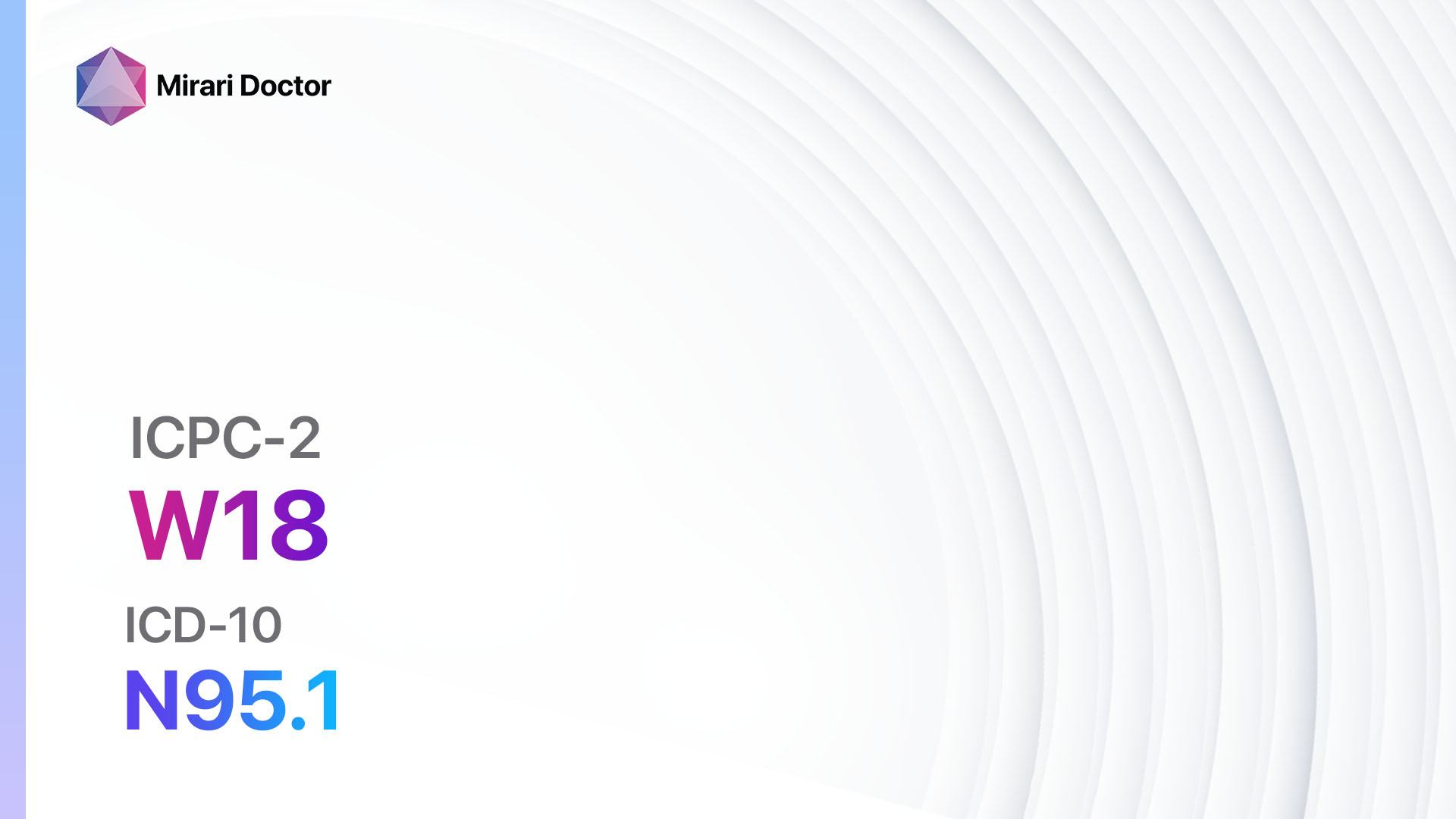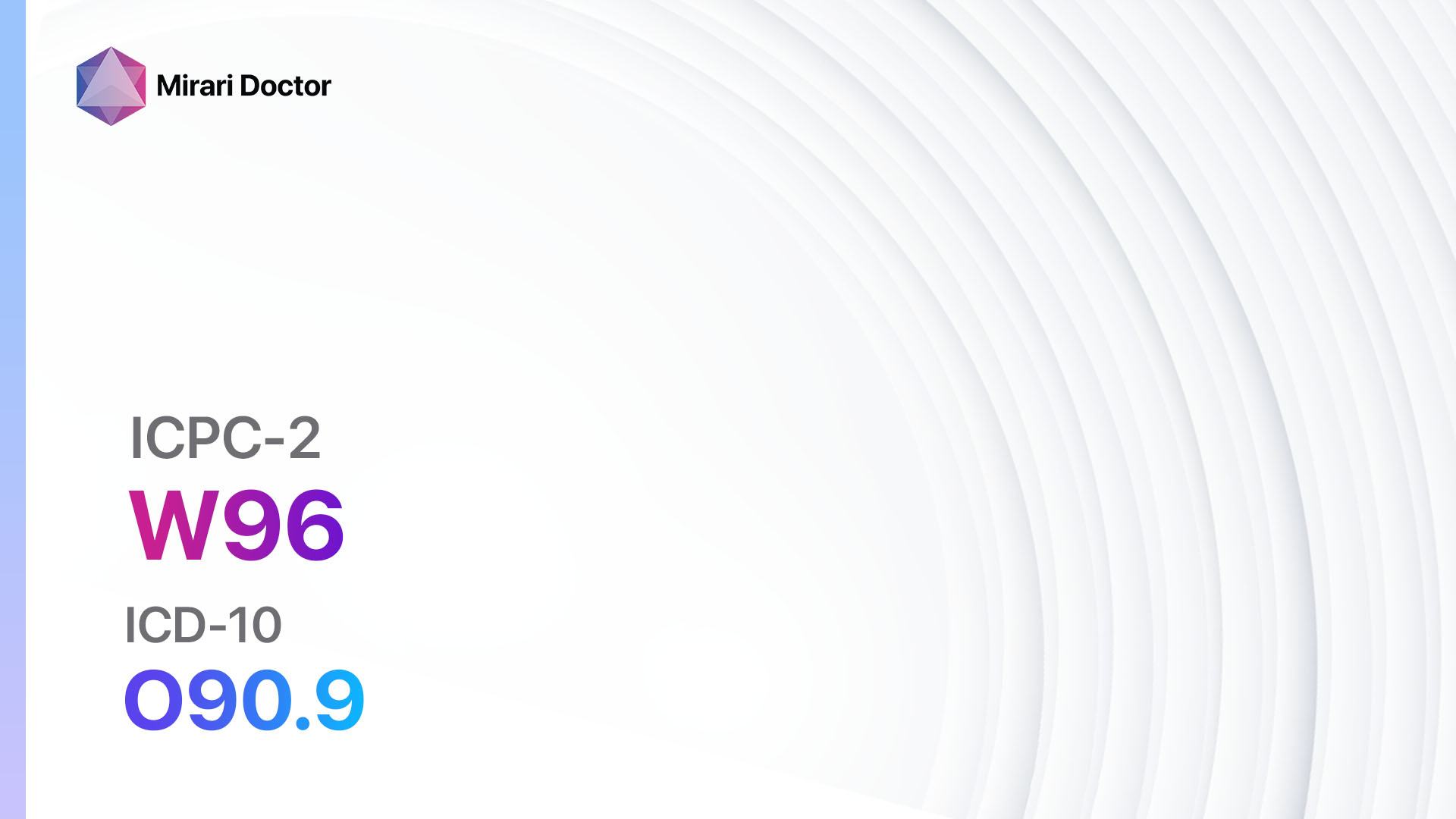
Introduction
Complications of puerperium other refers to any complications that may arise during the postpartum period, which is the period immediately following childbirth. These complications can range from mild to severe and can have a significant impact on the health and well-being of the mother[1]. The aim of this guide is to provide healthcare professionals with a comprehensive overview of the symptoms, causes, diagnostic steps, possible interventions, and follow-up care for complications of puerperium other.
Codes
- ICPC-2 Code: W96 Complications of puerperium other[2]
- ICD-10 Code: O90.9 Complication of the puerperium, unspecified[3]
Symptoms
- Vaginal bleeding: Excessive or prolonged bleeding from the vagina.
- Abdominal pain: Persistent or severe pain in the abdominal area.
- Fever: Elevated body temperature above 100.4°F (38°C).
- Breast pain or engorgement: Pain or discomfort in the breasts, often accompanied by swelling and tenderness.
- Urinary problems: Difficulty urinating or frequent urination.
- Bowel problems: Constipation or diarrhea.
- Fatigue: Feeling excessively tired or weak.
- Emotional changes: Mood swings, irritability, or feelings of sadness[4].
Causes
- Retained placental tissue: When a portion of the placenta remains in the uterus after childbirth, it can lead to complications.
- Infection: Infections can occur in the uterus, urinary tract, or breast tissue, leading to postpartum complications.
- Hormonal changes: Fluctuations in hormone levels during the postpartum period can contribute to complications.
- Trauma: Physical trauma during childbirth or postpartum can result in complications[5].
Diagnostic Steps
Medical History
- Gather information about the patient’s pregnancy and childbirth experience.
- Identify any risk factors for complications of puerperium other, such as previous history of postpartum complications or pre-existing medical conditions.
- Assess the patient’s symptoms and their severity[6].
Physical Examination
- Perform a thorough physical examination, including an abdominal examination to check for tenderness or abnormal masses.
- Examine the breasts for signs of engorgement or infection.
- Check for any signs of infection, such as redness, swelling, or discharge[7].
Laboratory Tests
- Complete blood count (CBC): To assess for signs of infection or anemia.
- Urinalysis: To check for urinary tract infection.
- Blood cultures: To identify the presence of bacteria in the bloodstream.
- Breast milk culture: To identify the presence of bacteria in breast milk[8].
Diagnostic Imaging
- Transvaginal ultrasound: To evaluate the uterus for retained placental tissue or other abnormalities.
- Abdominal ultrasound: To assess the abdominal organs for any abnormalities.
- Mammogram or breast ultrasound: To evaluate the breasts for signs of infection or other abnormalities[9].
Other Tests
- Endometrial biopsy: If there is suspicion of retained placental tissue, an endometrial biopsy may be performed to confirm the diagnosis.
- Breast milk analysis: If there are signs of infection in the breasts, a sample of breast milk may be analyzed to identify the specific bacteria causing the infection[10].
Follow-up and Patient Education
- Schedule follow-up appointments to monitor the patient’s progress and ensure appropriate treatment.
- Provide education on postpartum care, including proper hygiene, breastfeeding techniques, and signs of complications.
- Encourage the patient to seek medical attention if symptoms worsen or new symptoms develop[1][4].
Possible Interventions
Traditional Interventions
Medications:
Top 5 drugs for complications of puerperium other:
- Antibiotics (e.g., Amoxicillin, Cephalexin):
- Cost: Generic versions can be $3-$50/month.
- Contraindications: Allergy to penicillin or cephalosporins.
- Side effects: Nausea, diarrhea, rash.
- Severe side effects: Severe allergic reactions, Clostridium difficile infection.
- Drug interactions: Warfarin, oral contraceptives.
- Warning: Finish the full course of antibiotics as prescribed.
- Nonsteroidal anti-inflammatory drugs (NSAIDs) (e.g., Ibuprofen, Naproxen):
- Cost: Generic versions can be $3-$20/month.
- Contraindications: History of gastrointestinal bleeding, kidney disease.
- Side effects: Upset stomach, heartburn, dizziness.
- Severe side effects: Gastrointestinal bleeding, kidney damage.
- Drug interactions: Aspirin, blood thinners.
- Warning: Take with food to reduce the risk of stomach upset.
- Hormonal contraceptives (e.g., Combined oral contraceptives, Progestin-only pills):
- Cost: Varies depending on the specific contraceptive method.
- Contraindications: History of blood clots, breast cancer.
- Side effects: Nausea, breast tenderness, irregular bleeding.
- Severe side effects: Blood clots, stroke, heart attack.
- Drug interactions: Certain antibiotics, anticonvulsants.
- Warning: Discuss the risks and benefits with the patient.
- Antipyretics (e.g., Acetaminophen):
- Cost: Generic versions can be $3-$10/month.
- Contraindications: Severe liver disease.
- Side effects: None when used as directed.
- Severe side effects: Liver damage (with high doses or prolonged use).
- Drug interactions: Warfarin, alcohol.
- Warning: Do not exceed the recommended dosage.
- Antidepressants (e.g., Sertraline, Escitalopram):
- Cost: Generic versions can be $3-$20/month.
- Contraindications: Allergy to the medication, concurrent use of monoamine oxidase inhibitors (MAOIs).
- Side effects: Nausea, headache, insomnia.
- Severe side effects: Suicidal thoughts, serotonin syndrome.
- Drug interactions: MAOIs, certain pain medications.
- Warning: Monitor for changes in mood or behavior.
Alternative Drugs:
- Herbal remedies: Some herbal remedies, such as chamomile or lavender, may help with relaxation and mood stabilization. Cost: Varies depending on the specific remedy.
- Probiotics: Probiotics may help restore the balance of bacteria in the body and reduce the risk of infection. Cost: Varies depending on the specific product.
- Pain relieving creams: Topical creams containing lidocaine or menthol may provide relief from pain and discomfort. Cost: Varies depending on the specific product.
- Antifungal medications: If a fungal infection is suspected, antifungal medications may be prescribed. Cost: Varies depending on the specific medication.
- Antiviral medications: If a viral infection is suspected, antiviral medications may be prescribed. Cost: Varies depending on the specific medication.
Surgical Procedures:
- Dilation and curettage (D&C): In cases of retained placental tissue, a D&C may be performed to remove the tissue from the uterus. Cost: $1,500 to $5,000.
- Breast abscess drainage: If a breast abscess is present, it may need to be drained surgically. Cost: $2,000 to $10,000.
Alternative Interventions
- Acupuncture: May help with pain relief and relaxation. Cost: $60-$120 per session.
- Chiropractic care: May help with musculoskeletal pain and discomfort. Cost: $50-$200 per session.
- Massage therapy: May help with relaxation and pain relief. Cost: $50-$100 per session.
- Herbal supplements: Some herbal supplements, such as fenugreek or blessed thistle, may help with milk production. Cost: Varies depending on the specific supplement.
- Homeopathic remedies: Homeopathic remedies, such as Arnica montana or Hypericum perforatum, may help with pain relief and wound healing. Cost: Varies depending on the specific remedy.
Lifestyle Interventions
- Rest and relaxation: Adequate rest and relaxation are essential for the healing process. Cost: Varies depending on the individual’s lifestyle.
- Healthy diet: A well-balanced diet rich in nutrients can support the body’s healing process. Cost: Varies depending on the individual’s dietary choices.
- Hydration: Drinking plenty of fluids can help prevent dehydration and support overall health. Cost: Varies depending on the individual’s access to clean drinking water.
- Gentle exercise: Engaging in gentle exercise, such as walking or yoga, can promote physical and mental well-being. Cost: Varies depending on the individual’s preferred exercise method.
- Stress management: Finding healthy ways to manage stress, such as meditation or deep breathing exercises, can support overall well-being. Cost: Varies depending on the individual’s chosen stress management techniques.
It is important to note that the cost ranges provided are approximate and may vary depending on the location and availability of the interventions.
Mirari Cold Plasma Alternative Intervention
Understanding Mirari Cold Plasma
- Safe and Non-Invasive Treatment: Mirari Cold Plasma is a safe and non-invasive treatment option for various skin conditions. It does not require incisions, minimizing the risk of scarring, bleeding, or tissue damage.
- Efficient Extraction of Foreign Bodies: Mirari Cold Plasma facilitates the removal of foreign bodies from the skin by degrading and dissociating organic matter, allowing easier access and extraction.
- Pain Reduction and Comfort: Mirari Cold Plasma has a local analgesic effect, providing pain relief during the treatment, making it more comfortable for the patient.
- Reduced Risk of Infection: Mirari Cold Plasma has antimicrobial properties, effectively killing bacteria and reducing the risk of infection.
- Accelerated Healing and Minimal Scarring: Mirari Cold Plasma stimulates wound healing and tissue regeneration, reducing healing time and minimizing the formation of scars.
Mirari Cold Plasma Prescription
Video instructions for using Mirari Cold Plasma Device – W96 Complications of puerperium other (ICD-10:O90.9)
| Mild | Moderate | Severe |
| Mode setting: 1 (Infection) Location: 5 (Lungs) Morning: 15 minutes, Evening: 15 minutes |
Mode setting: 1 (Infection) Location: 5 (Lungs) Morning: 30 minutes, Lunch: 30 minutes, Evening: 30 minutes |
Mode setting: 1 (Infection) Location: 5 (Lungs) Morning: 30 minutes, Lunch: 30 minutes, Evening: 30 minutes |
| Mode setting: 2 (Wound Healing) Location: 6 (Throat, Lymphatic & Thyroid) Morning: 15 minutes, Evening: 15 minutes |
Mode setting: 2 (Wound Healing) Location: 6 (Throat, Lymphatic & Thyroid) Morning: 30 minutes, Lunch: 30 minutes, Evening: 30 minutes |
Mode setting: 2 (Wound Healing) Location: 6 (Throat, Lymphatic & Thyroid) Morning: 30 minutes, Lunch: 30 minutes, Evening: 30 minutes |
| Mode setting: 7 (Immunotherapy) Location: 1 (Sacrum) Morning: 15 minutes, Evening: 15 minutes |
Mode setting: 7 (Immunotherapy) Location: 1 (Sacrum) Morning: 30 minutes, Lunch: 30 minutes, Evening: 30 minutes |
Mode setting: 7 (Immunotherapy) Location: 1 (Sacrum) Morning: 30 minutes, Lunch: 30 minutes, Evening: 30 minutes |
| Total Morning: 45 minutes approx. $7.50 USD, Evening: 45 minutes approx. $7.50 USD |
Total Morning: 90 minutes approx. $15 USD, Lunch: 90 minutes approx. $15 USD, Evening: 90 minutes approx. $15 USD |
Total Morning: 90 minutes approx. $15 USD, Lunch: 90 minutes approx. $15 USD, Evening: 90 minutes approx. $15 USD |
| Usual treatment for 7-60 days approx. $105 USD – $900 USD | Usual treatment for 6-8 weeks approx. $1,890 USD – $2,520 USD |
Usual treatment for 3-6 months approx. $4,050 USD – $8,100 USD
|
 |
|
Use the Mirari Cold Plasma device to treat Complications of puerperium other effectively.
WARNING: MIRARI COLD PLASMA IS DESIGNED FOR THE HUMAN BODY WITHOUT ANY ARTIFICIAL OR THIRD PARTY PRODUCTS. USE OF OTHER PRODUCTS IN COMBINATION WITH MIRARI COLD PLASMA MAY CAUSE UNPREDICTABLE EFFECTS, HARM OR INJURY. PLEASE CONSULT A MEDICAL PROFESSIONAL BEFORE COMBINING ANY OTHER PRODUCTS WITH USE OF MIRARI.
Step 1: Cleanse the Skin
- Start by cleaning the affected area of the skin with a gentle cleanser or mild soap and water. Gently pat the area dry with a clean towel.
Step 2: Prepare the Mirari Cold Plasma device
- Ensure that the Mirari Cold Plasma device is fully charged or has fresh batteries as per the manufacturer’s instructions. Make sure the device is clean and in good working condition.
- Switch on the Mirari device using the power button or by following the specific instructions provided with the device.
- Some Mirari devices may have adjustable settings for intensity or treatment duration. Follow the manufacturer’s instructions to select the appropriate settings based on your needs and the recommended guidelines.
Step 3: Apply the Device
- Place the Mirari device in direct contact with the affected area of the skin. Gently glide or hold the device over the skin surface, ensuring even coverage of the area experiencing.
- Slowly move the Mirari device in a circular motion or follow a specific pattern as indicated in the user manual. This helps ensure thorough treatment coverage.
Step 4: Monitor and Assess:
- Keep track of your progress and evaluate the effectiveness of the Mirari device in managing your Complications of puerperium other. If you have any concerns or notice any adverse reactions, consult with your health care professional.
Note
This guide is for informational purposes only and should not replace the advice of a medical professional. Always consult with your healthcare provider or a qualified medical professional for personal advice, diagnosis, or treatment. Do not solely rely on the information presented here for decisions about your health. Use of this information is at your own risk. The authors of this guide, nor any associated entities or platforms, are not responsible for any potential adverse effects or outcomes based on the content.
Mirari Cold Plasma System Disclaimer
- Purpose: The Mirari Cold Plasma System is a Class 2 medical device designed for use by trained healthcare professionals. It is registered for use in Thailand and Vietnam. It is not intended for use outside of these locations.
- Informational Use: The content and information provided with the device are for educational and informational purposes only. They are not a substitute for professional medical advice or care.
- Variable Outcomes: While the device is approved for specific uses, individual outcomes can differ. We do not assert or guarantee specific medical outcomes.
- Consultation: Prior to utilizing the device or making decisions based on its content, it is essential to consult with a Certified Mirari Tele-Therapist and your medical healthcare provider regarding specific protocols.
- Liability: By using this device, users are acknowledging and accepting all potential risks. Neither the manufacturer nor the distributor will be held accountable for any adverse reactions, injuries, or damages stemming from its use.
- Geographical Availability: This device has received approval for designated purposes by the Thai and Vietnam FDA. As of now, outside of Thailand and Vietnam, the Mirari Cold Plasma System is not available for purchase or use.
References
- Schrey-Petersen, S., Tauscher, A., Dathan-Stumpf, A., & Stepan, H. (2021). Diseases and Complications of the Puerperium. Deutsches Ärzteblatt International, 118(26), 439-446.
- WONCA International Classification Committee. (2005). ICPC-2: International Classification of Primary Care. Oxford University Press.
- World Health Organization. (2019). ICD-10: International Statistical Classification of Diseases and Related Health Problems, 10th Revision.
- Robbins, J., Jeffries, D., Roubidoux, M., & Helvie, M. (2011). Accuracy of diagnostic mammography and breast ultrasound during pregnancy and lactation. AJR Am J Roentgenol, 196(3), 716-722.
- Taylor, D., Lazberger, J., Ives, A., Wylie, E., & Saunders, C. (2011). Reducing delay in the diagnosis of pregnancy-associated breast cancer: how imaging can help us. J Med Imaging Radiat Oncol, 55(1), 33-42.
- Son, E. J., Oh, K. K., & Kim, E. K. (2006). Pregnancy-associated breast disease: radiologic features and diagnostic dilemmas. Yonsei Med J, 47(1), 34-42.
- Whang, I. Y., Lee, J., & Kim, K. T. (2007). Galactocele as a changing axillary lump in a pregnant woman. Arch Gynecol Obstet, 276(4), 379-382.
- Hicks, D. H., & Lester, S. C. (2012). Diagnostic Pathology: Breast. Volume 9. Salt Lake City: Amirsys.
- Oh, Y. J., Choi, S. H., Chung, S. Y., Yang, I., Woo, J. Y., & Lee, M. J. (2009). Spontaneously infarcted fibroadenoma mimicking breast cancer. J Ultrasound Med, 28(10), 1421-1423.
- Brennan, M., Houssami, N., & French, J. (2005). Management of benign breast conditions. Part 2—breast lumps and lesions. Aust Fam Physician, 34(4), 253-255.
Related articles
Made in USA


